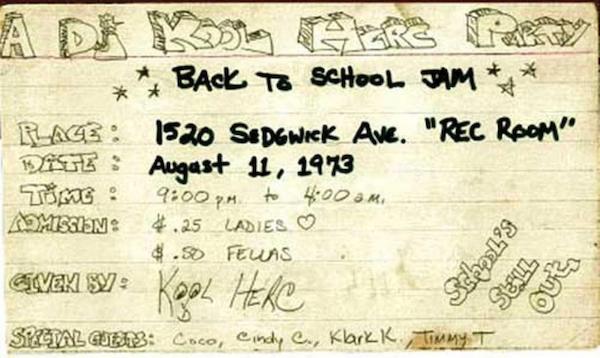Fifty years since Kool Herc’s legendary DJ set at his sister’s party in the Bronx kickstarted hip hop, the world has changed dramatically.
Back in the day, labels and radio were the gatekeepers for which artists would break — today, anyone with talent and a cell phone can record music, grow a fanbase, and build a sustainable career from their bedroom.
With all the attention crypto and NFTs received during the 2017 and 2021 bull runs, it’s no surprise that numerous rappers have dipped their toes in the space, with some seeing spectacular success: Snoop Dogg, Logic, Nas, Ghostface Killah and Eminem, among them.
The two movements share a lot in common — from anti-establishment roots and entrepreneurial spirits to pushing the envelope with technological innovation.
But given the massive success rap music has seen on the global stage, does hip hop really even need blockchain and crypto? Is it just another way to make money, or is there something deeper drawing so many rappers into Web3?
Rappers and their love for crypto
In November 2020, rapper Logic revealed he had aped $6 million into Bitcoin, perhaps the largest publicly known purchase by an emcee. In June 2022, the Grammy-winning “1-800-273-8255” rapper doubled down, telling radio personality Big Boy, “The market’s down, but […] I’m like three to five years in my head. Don’t even look at it.”

He’s not the only one. The most legendary and committed rapper is likely Snoop Dogg, who is seen by many as an ambassador for Web3. He has experimented with NFTs and token-gated fan experiences, once considered transforming Death Row Records into a metaverse label, and co-founded a Web3 livestreaming platform.
Snoop told Vanity Fair in 2021 that NFTs offer “a direct connection to my fans and my community. Unlike when you buy one of my records, or download a song of mine, I can’t connect with you. You dig? With NFTs, I can. […] There is no platform or middleman filtering my message anymore.”
In 2022, Snoop linked up with fellow Bored Ape aficionado Eminem for a BAYC-themed song and music video. He even made Cointelegraph’s Top 100 list two years in a row — in 2022 and 2023.
Soulja Boy is another long-time fan of Bitcoin, even naming a 2018 song after it. But despite his excitement over how much money he made from the cryptocurrency, he has also been accused of shilling various pump-and-dumps and NFT scam projects.
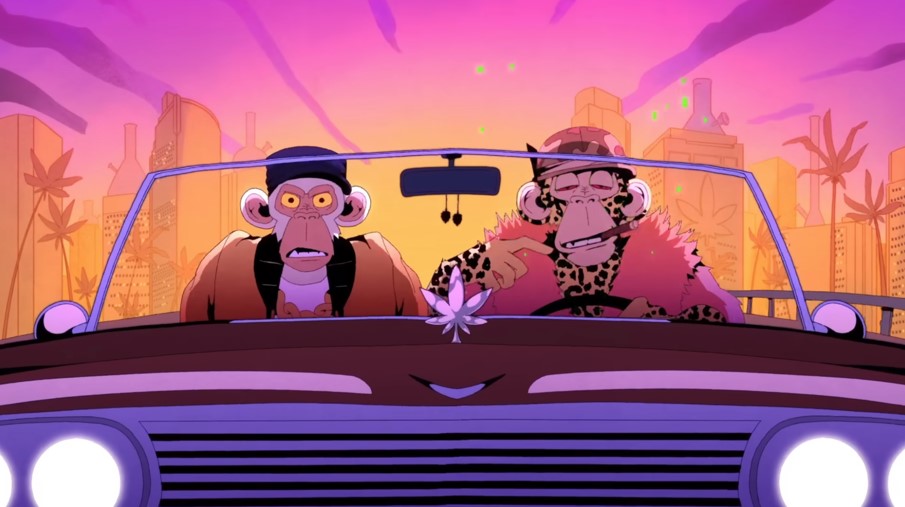
Most recently, Ghostface Killah of the Wu-Tang Clan dropped new music as Bitcoin Ordinals, with holders free to use the music as they please under a Creative Commons Zero license.
Others have experimented with tokenizing the royalties associated with their songs. Nas, whose debut album, Illmatic, is universally recognized as one of the greatest hip hop records of all time, had a very successful drop on Royal in January 2022. Collectors who purchased the NFTs got a cut of the royalties generated by his songs “Rare” and “Ultra Black.”
Nas was also an early investor in Coinbase and likely netted a cool $40 million or more when the exchange went public in 2021. He was most recently spotted with Coinbase CEO Brian Armstrong at a get-out-the-vote event hosted by Stand with Crypto, an advocacy group pushing for pro-crypto policies, where he called cryptocurrency an “innovative, fresh, new, exciting, different way to connect with the central banks and change things in a more convenient way.”
Crypto & hip hop: A match meant to be?
Plenty of up-and-coming rappers have also been bitten by the blockchain bug. So, why is that rappers seem to love crypto? To start, hip hop and crypto are both rooted in counterculture and rebellion.
From N.W.A and Public Enemy to Dead Prez and Immortal Technique, hip hop has a long, storied history of challenging the powers that be and speaking on issues affecting urban communities, such as poverty and police brutality. Likewise, Satoshi Nakamoto’s Bitcoin rose out of the rubble of the 2007–2008 financial crisis as an anti-establishment challenge to the power and authority of the traditional financial system.
Hip hop and Web3 also prioritize self-ownership and control, says musician and NFT creator Latashá, who got her start as a rapper but now describes herself as an “artist and world-builder.”
“Jay-Z, to me, is like a predecessor, [and] Nipsey Hussle is a predecessor of Web3.” She tells Magazine that “their whole mentality was about independence. It was about ownership. It was about keeping everything as much as possible.”
“I think it goes back to the beginnings of hip hop and what hip hop really was about before the industry kind of took it over, which, to me, is about that experimentation, that ability to sell a CD out of your trunk. That kind of vibration is what I really loved about music and hip hop, and I still resonate with it through Web3.”

Nipsey Hussle, who was tragically gunned down in 2019, was a big believer in cryptocurrency. Back in 2018, Nipsey described crypto as “a form of karma”:
“The banks had such a crooked model that the engineers and software designers and programmers was like ‘We not gon fix this with a protest, we not gon fix this with a march on Wall Street. We gon fix this with technology.’ And they created an equalizer that just, it checkmated the whole game.”
Get rich or die tryin’ with NFTs
Nipsey Hussle was also a real-world pioneer of many signature NFT moves, like item scarcity and peer-to-peer commerce. In 2013, he made a highly limited run of 1,000 physical copies of his mixtape Crenshaw and sold them for $100 each. Supporters rallied around the hashtag #ProudToPay.

In 2015, he repeated the experiment, this time pressing an even more limited edition of just 100 copies of his mixtape Mailbox Money and selling them for $1,000 apiece.
Fans could listen to both projects for free online — in the same way anyone can look at a Bored Ape JPEG online — but purchasers got a limited edition collectible and the provable knowledge that their money went straight to the artist. This is a strategy many musicians use with music NFTs today.
Nipsey’s entrepreneurial spirit is deeply rooted in hip hop, where music has offered many an escape from poverty and the opportunity to live a previously unattainable lavish life of financial security. From jewelry to luxury cars and expensive clothes, rappers have earned a reputation for bragging about and showing off their wealth.
Likewise, crypto is full of wild success stories of face-melting gains and speeding Lambos and is seen as an opportunity to build wealth in a world where the cards are stacked against those who don’t already have them. The truth is that despite their deep cultural roots, both crypto and rap music have their fair share of people who are just in it to make as much money as humanly possible.
Hip hop and crypto are both rooted in a culture of technological creativity and innovation.
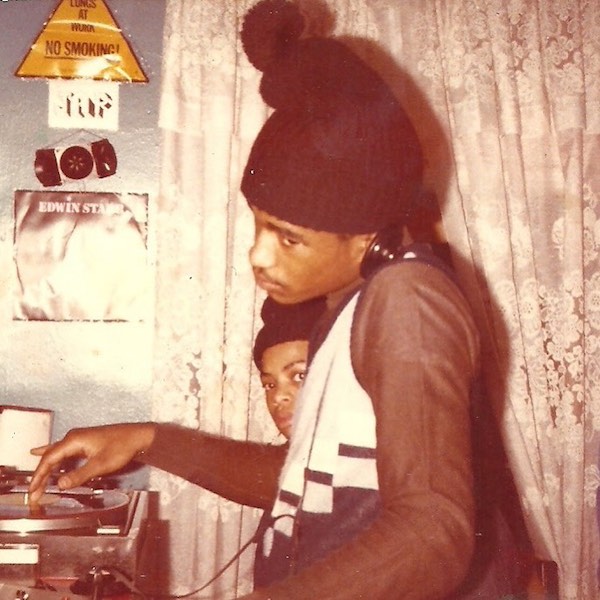
“Marley Marl invented the sample, right?” points out music attorney Renata Lowenbraun, CEO of independent music Web3 platform Infanity, which is primarily focused on hip hop and R&B.
She also points to MP3s, with rappers being some of the first musicians to wholeheartedly embrace the novel method of distribution through online mixtapes, pioneered by artists like Lil Wayne in the mid-2000s.
The foundation of rap was built upon repurposing old technology to create something completely new and unique. Turntables became instruments, and vinyl records became samples from which new songs were created. Today, developers fork existing blockchain protocols to create something unique, while memes on Crypto Twitter get flipped and remixed every day.
“I think the culture of hip hop and the ancestors of hip hop, even, always were technologically advanced, always were thinking about how to do things differently,” says Latashá.
“I think hip hop is literally technology in itself, and so it only makes sense that it would be correlated with Web3.”
Crypto vs. the music industry
Web3 also offers an alternative route to success to the major record labels, which have a reputation for being exploitative, controlling and predatory.

“It is sort of the first time that if you happen to be somebody who is an independent artist and really wants to be successful without relying on streaming or the major labels, you can do that,” argues Lowenbraun.
Her company, Infanity, recently launched a partnership with The Hype Magazine, a legendary hip hop magazine, focused on spreading the word in the hip hop community about the power of Web3.
The publication was home to the first-ever cover stories on rappers such as Ludacris and Soulja Boy, and — adding evidence to hip hop’s embrace of new tech — it was also one of the earliest publications to go digital.
Hype Magazine founder Jameelah “Just Jay” Wilkerson tells Magazine it was Web3’s ability to give artists back control that initially caught her attention.
“I was like, ‘So, we can give artists control of their legacy rights to their stuff?’ You know, this is not something that happened in my lifetime. I’ve been 21 years in, and I have never seen that. I’ve always seen labels control everything.”

“This is the first time that I’ve met people in the entertainment industry who are willing to teach the artists how to keep their ownership and make money off of what they do.”
Infanity’s “chief hip hop officer” is Tragedy Khadafi, a hip hop icon from Queens, New York who was the first to use the word “illmatic” on a record — later adopted by Nas for the name of his classic first album.
He also put together the group Capone-N-Noreaga and gave Havoc of Mobb Deep his rap name.
But he tells Magazine that his experience in the music business has been “a painful education” and that “not being informed, not having control over what you create is never a good thing.”
That’s why he’s excited about Infanity and Web3.
“I’m with a movement that’s for the artists, empowering the artists, informing the artists, educating the artists, you know? And that’s real important to me.”
NFTs give rappers an independent way to release music
Perhaps having heard the horror stories of artists like Tragedy Khadafi, many in the current generation of rappers aren’t looking toward the music industry at all.
According to Jay Kila, a Mumbai-based independent rapper who founded the digital collectible project OTP India, blockchain offers the promise of no longer having to rely on the measly payouts offered by streaming services.
“I just don’t have any faith at all in the streaming economy,” he tells Magazine. “I don’t have any trust in record labels, and NFTs represent a new frontier for artists to actually, you know, make an income from their music and their art.”
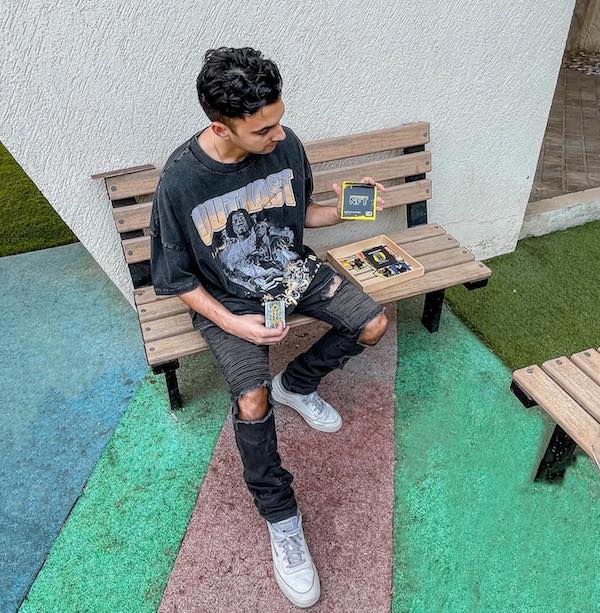
Kila got into NFTs in 2021 after hearing about the astronomical $69-million sale of Beeple’s “Everydays: the First 5000 Days” artwork. “The idea that these NFTs were changing artists’ lives, or that you could sell an NFT and, you know, make $500 or $1,000 — that’s more than you’d make from Spotify in like five years from a song.”
Spotify pays out roughly $0.002 to $0.003 per stream. That means a song needs to be streamed between 333,000 and 500,000 times to earn just $1,000. This led him to launch OTP India and release India’s first known hip hop NFT EP, “No Free Tracks.”
Now, compare Spotify to a platform like Sound, where Latashá dropped an NFT for her song “Showtime” in September 2022. 100 fans minted the song, netting her 8 ETH — over $10,000 at bear market prices. It would have taken 3.3 million–5 million streams on Spotify to match this payout.
Why hip hop needs crypto and Web3
Crypto and hip hop both offer opportunities and ways out of poverty for communities facing economic disadvantages.
To this day, Black American families hold just 23.5% of the wealth held by white households and are unbanked at much higher rates. Surveys have shown that Black Americans tend to hold crypto at higher rates as well, many of whom see crypto as an opportunity to narrow the wealth gap.
As of 2021, 17.2% of households in the Bronx, where hip hop began, are unbanked — four times the national average. For Lowenbraun, this is all the more reason to make sure these communities are onboarded into Web3 and NFTs, which offer access to financial opportunities and networks that were previously closed off to the average person.
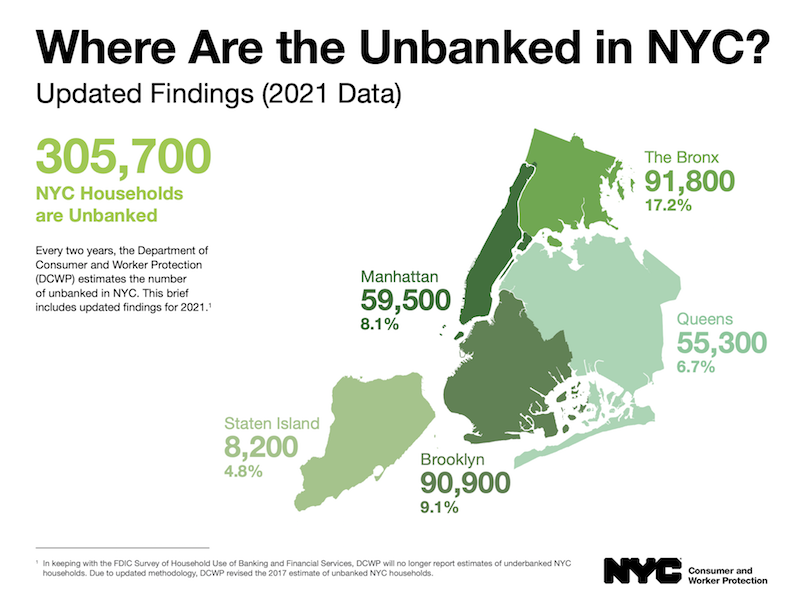
“You should absolutely want to care about Web3 because that’s what it’s about — it’s about the underbanked,” says Lowenbraun.
“Web3 is about not having to rely on financial institutions to be able to conduct commerce, including buying music, selling music, anything.”
One big issue, however, is that access to crypto requires access to reliable internet, and there remain some parts of the Bronx, for example, where upward of 40% of households still lack broadband internet access.
“I was concerned from the very beginning that this is like the digital divide,” says Lowenbraun. “These communities, who literally are responsible for hip hop, for so many different genres of music, who are big consumers — they shouldn’t be one of them. They should benefit.”
Hip hop’s unique challenges in crypto and Web3
In addition to a lack of access to certain technologies in many communities, there are some other unique challenges particular to hip hop.
For example, rap music often features samples, and clearing a sample can be complex and expensive. The original rights holders are generally entitled to a portion of the revenue generated from the new song.
Going on to release that new song as an NFT on a blockchain adds an extra layer of IP complexity — and there is currently no clearly defined legal and regulatory framework for music NFTs. And if an artist says, “screw this,” and decides the process is too complicated and releases an NFT without clearing the sample first, well, then there is an immutable, timestamped record of that copyright infringement.
Artists can also get into hot water for promoting NFT collections that subsequently tank, leaving fans holding worthless collectibles.
Lil Uzi Vert was dragged over the hot coals in September 2021 after he seemingly withdrew support for “Eternal Beings,” an NFT collection inspired by the rapper. The NFTs, which sold out upon release, now have a floor price of just 0.0145 SOL — down 99% from their mint price of 2.5 SOL.
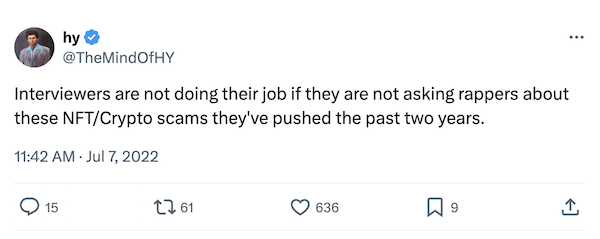
Disgraced rapper-turned-informant Tekashi 6ix9ine also found himself at the center of controversy (yet again) in 2021 after the “Trollz Collection” NFT drop he promoted saw one of its Discord mods go rogue and phish the collection’s followers for their crypto.
But Latashá points out that the media prefers to focus on crypto controversies rather than crypto success stories.
“They didn’t hear about how an artist like myself or artists like Heno were figuring it out and struggling as just a regular Web2 streaming artist and then got into Web3, and that literally shifted our existences so that we could have abundance to do more and give more, right?”
“I feel like when fans hear those stories, it kind of tells a different take on Web3 and offers a different identity of what this tool is.”
The future of crypto, Web3 and hip hop
Ask any true blockchain believer about the future, and they will tell you that blockchain is the future. There exists today an entire ecosystem of websites, apps, influencers, consultants, podcasts and content creators focused on empowering independent rappers and other artists so they don’t have to rely on major labels. It seems only a matter of time before a similar ecosystem pops up around blockchain tools.
“We’re only beginning to see what amazing things people are doing,” Lowenbraun says. “Just wait till they really begin adopting hip hop.”
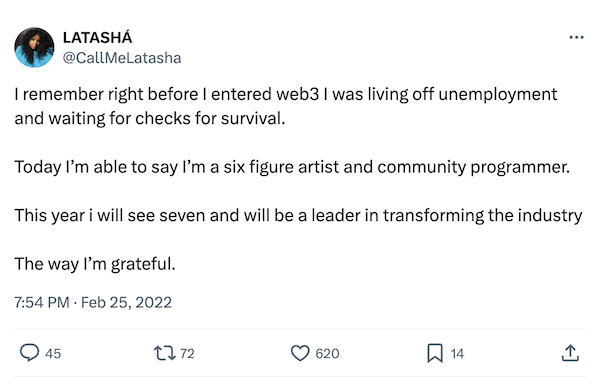
week.

The post Get Bitcoin or die tryin’: Why hip hop stars love crypto appeared first on Cointelegraph Magazine.
